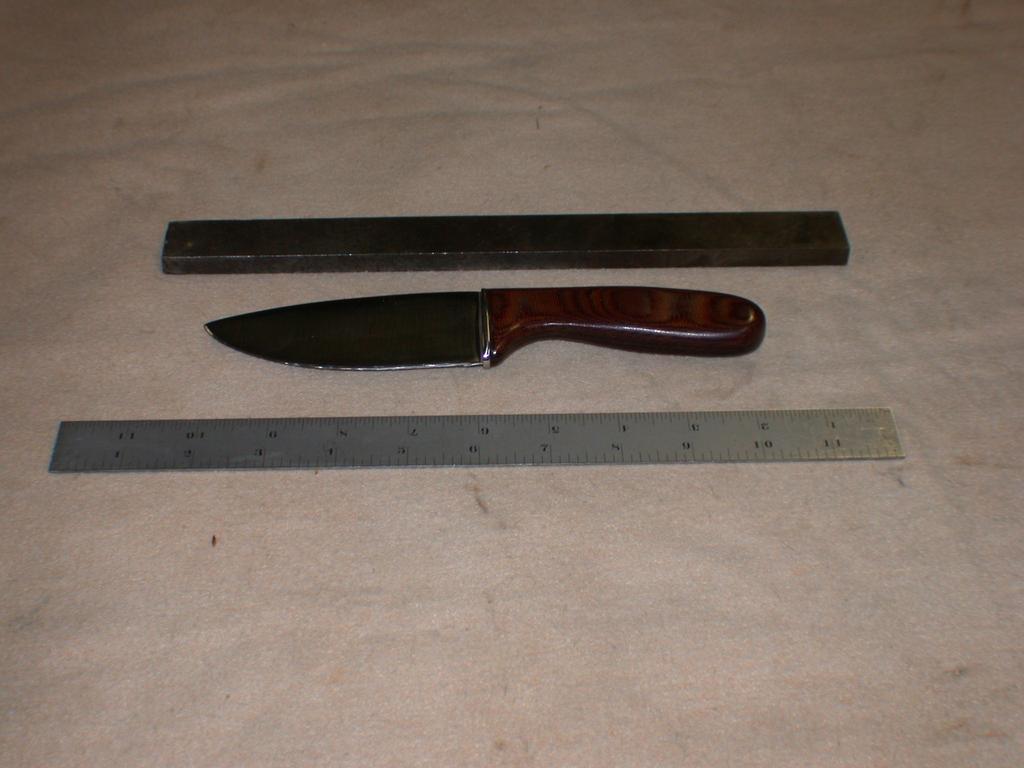John R
32 Cal
Fooling around in the shop today.
Found a box of blades and knives I made in about 1980.
This one was forged from a piece of steel identical to the piece in this photo.
Used a coal forge. An Anvil that pre dated the American Civil War and has been in the family since. And a companion hammer from the same time frame.
Heated in a wood stove until cherry red. Quenched in oil.
Ground and polished then tempered on the top of the same wood stove. Left it on the stove until the colors started running blue, then a quench in light oil.
Tested on my Wilson Rockwell Hardness Tester at 57 C.

More

After the mods review this post for legality, and if they do not object, with their permission I will post photos of the Rockwell Hardness Tester and how it is used. They might not approve, the tester was made in WW II.
Found a box of blades and knives I made in about 1980.
This one was forged from a piece of steel identical to the piece in this photo.
Used a coal forge. An Anvil that pre dated the American Civil War and has been in the family since. And a companion hammer from the same time frame.
Heated in a wood stove until cherry red. Quenched in oil.
Ground and polished then tempered on the top of the same wood stove. Left it on the stove until the colors started running blue, then a quench in light oil.
Tested on my Wilson Rockwell Hardness Tester at 57 C.

More

After the mods review this post for legality, and if they do not object, with their permission I will post photos of the Rockwell Hardness Tester and how it is used. They might not approve, the tester was made in WW II.





